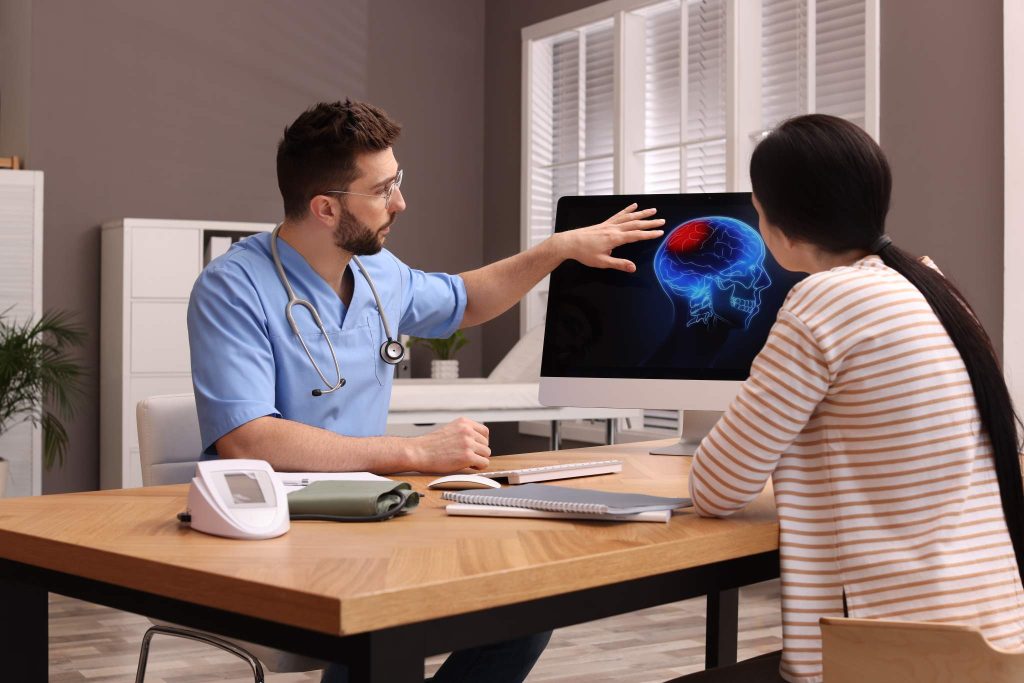If you have ever broken a bone or been in a car accident, then you may have had an X-ray or CT scan. These are types of diagnostic imaging tools that help your doctor get a better look at any damage to your internal structures. When it comes to healing from an injury or medical condition, you want to know that the diagnosis is correct. Diagnostic imaging helps doctors visualize the damage while also ruling out other potential issues or injuries. For example, if you were recently in a car accident and have neck and upper back pain, you might think it’s just sore muscles after a traumatic event. Diagnostic imaging like an X-ray, CT scan, or MRI can provide your doctor with much more information and learn what type of injury you have sustained so you can get the most beneficial and effective type of treatment.
Hidden Injuries After a Car Accident
Car accident injuries can be tricky to diagnose because the symptoms can take a while to appear. In fact, some car accident injuries are often called hidden injuries because they come with delayed symptoms. The trauma of getting into a car accident can jumpstart your adrenaline and you might even be in shock afterward. Both adrenaline and shock can keep you from fully recognizing pain symptoms and the severity of any injuries you may have sustained. It can take hours or even days for pain and other symptoms to set in as your adrenaline wears off. That is why you should always accept any medical attention at the scene of the accident and also visit a car accident doctor for follow-up care as soon as possible. While you might not have all the symptoms of a car accident injury yet, your doctor can use these types of diagnostic imaging tools to get a look inside and see whether or not your bones, joints, muscles, or organs have sustained any damage.
Diagnostic Imaging Options
There are many diagnostic imaging options available and the type of suspected injury can determine which tool is most appropriate. The severity of the injury can also determine what type of diagnostic imaging tool to use first. Here are three of the most common diagnostic imaging tools and how they help with diagnosing a wide variety of injuries and medical conditions.
X-Rays
X-rays are the most common diagnostic imaging tool and are more familiar to the general public. When you think of an X-ray, you might picture the black and white images that a doctor uses to diagnose a broken bone. X-rays use small doses of radiation to provide contrast images of the bones and joints inside the body. This type of diagnostic imaging is very quick and efficient, which makes it a go-to option for emergency cases and in urgent care situations. Your doctor may request an X-ray if you have a suspected broken bone, dislocated joint, or spinal misalignment.
CT Scans
CT scans are similar to X-rays in that they also use small doses of radiation for diagnostic imaging. However, unlike an X-ray, a CT scan provides a three-dimensional image of the affected area and includes images of soft tissues like muscles, ligaments, and tendons. CT scans are also common in emergency situations because the scan typically takes a short period of time to complete. Your doctor may also request a CT scan if an X-ray was inconclusive or didn’t provide enough clarity and detail of damage to your internal structures. CT scans can be used to confirm a diagnosis of injuries like whiplash, a herniated disc, and a broken joint.
MRIs
MRI scans are a type of diagnostic imaging that does not use radiation. Instead, an MRI machine, which stands for magnetic resonance imaging, provides your doctor with detailed images of your internal structures by using strong magnets and radio waves. An MRI scan takes longer to complete than an CT scan or X-ray, though it provides cross-sectional images of affected areas in the greatest detail. MRI scans can be used to detect tumors, monitor cancer progression, and diagnose brain injuries.
How Diagnostic Imaging Can Help
Diagnostic imaging helps provide your doctor with valuable pictures of how your internal structures were affected by an injury or illness. In order to create an informed and individualized treatment plan, your doctor will want to utilize diagnostic imaging tools to ensure the most accurate diagnosis. Visit one of our AICA Orthopedics locations across metro Atlanta for our in-house diagnostic imaging options and meet with one of our doctors today!





